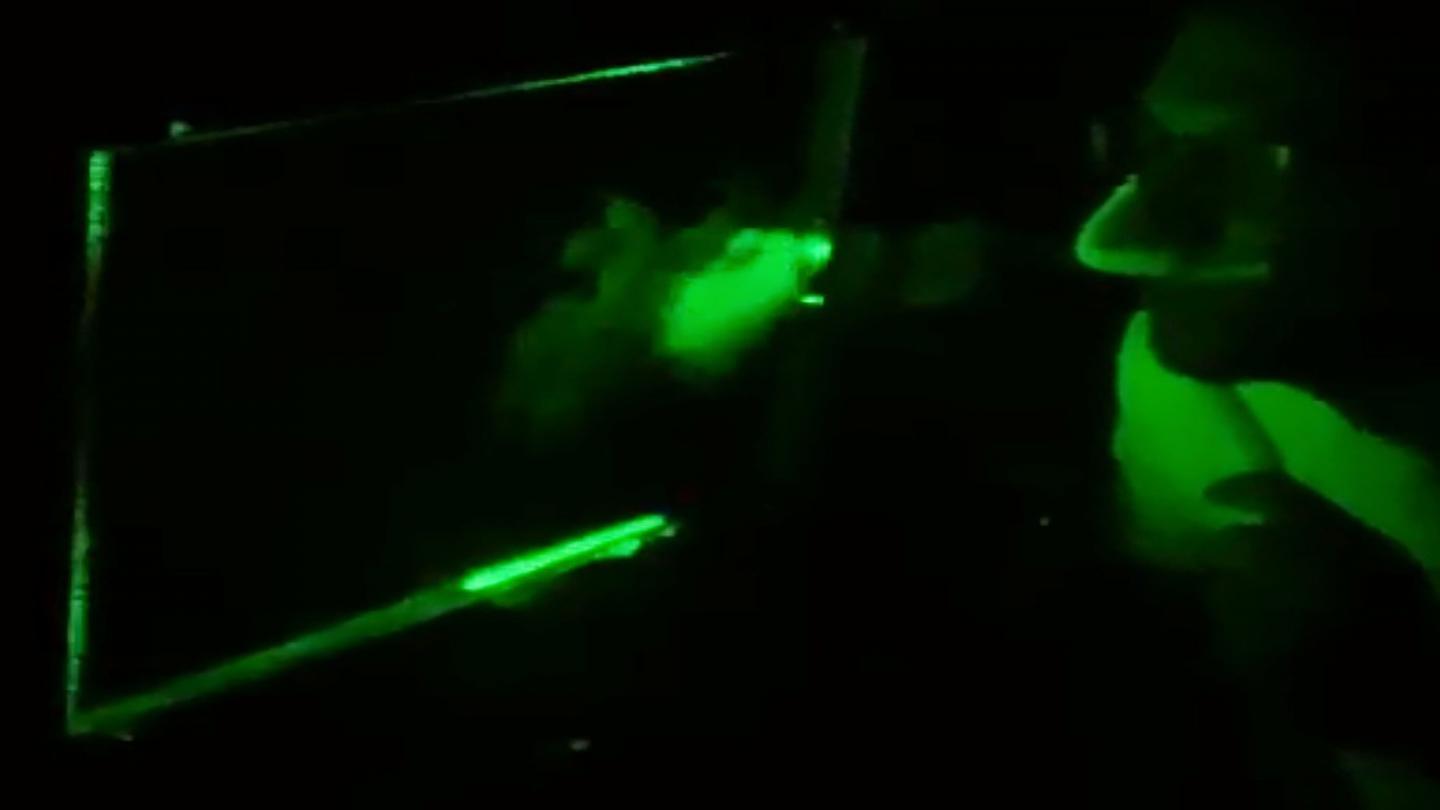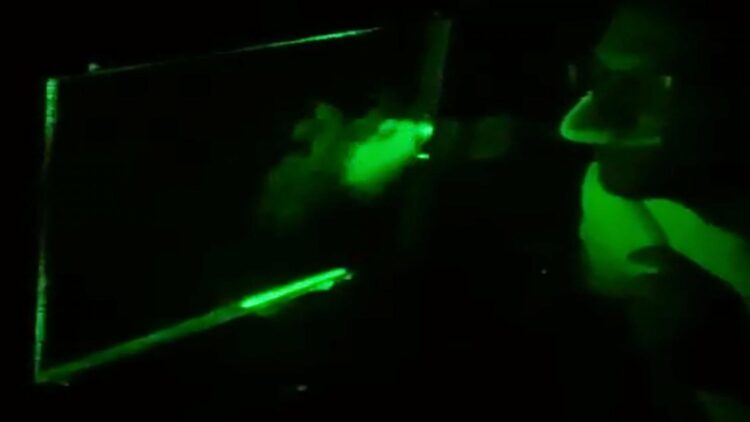Modeling shows SARS-CoV2 isn’t spread very well by the small droplets that linger longest

Credit: University of Amsterdam
WASHINGTON, October 27, 2020 — Aerosol microdroplets, the tiny particles that linger in the air longest after we talk, cough, or sneeze, do not appear to be extremely efficient at spreading the virus that leads to COVID-19.
Modeling of SARS-CoV-2 transmission in confined spaces suggests aerosol transmission is not a very efficient route. The results were published in Physics of Fluids, by AIP Publishing.
Physicists and medical doctors at the University of Amsterdam’s Van der Waals-Zeeman Institute used laser technology to measure the distribution of droplets released when people speak or cough. Test subjects spoke or coughed into a laser beam, and a jet nozzle was used to mimic tiny aerosol microdroplets. This allowed researchers to measure how droplets spread and how likely they are to pass along SARS-CoV2.
While the lingering microdroplets are certainly not risk-free, due to their small size they contain less virus than the larger droplets that are produced when someone coughs, speaks, or sneezes directly on us, said Daniel Bonn, one of the authors and institute director.
“Based on the current insights, we actually see that aerosol-wise, it’s relatively safe to go into well-ventilated modern buildings, such as airports, train stations, modern offices, etc.,” Bonn said. “Modern ventilation makes the aerosol infection risk not very large. The amount of virus in the small droplets is relatively small, meaning that it becomes dangerous if you’re in a badly ventilated room for a relatively long time with an infected person or after an infected person has coughed there.”
If someone enters a space even a few minutes after a mildly symptomatic carrier of the coronavirus has coughed in that area, the probability of infection is “rather low,” according to the researchers. It is even lower if that person was only talking.
The findings, Bonn said, support the efficacy of wearing masks, social distancing, and other measures targeting the spread of larger droplets.
“They are so large that they fall onto the ground roughly within a meter from your mouth,” he said. “If you want to minimize the risk of infection, you need to not only keep the 6 feet, or 1.5 meters, but also make sure the room you are in is well ventilated. And wash your hands.”
The researchers acknowledge the study’s findings are “necessarily subjective.” But, Bonn said, the authors hope it provides some context as people consider their safety during the pandemic.
###
The article, “Aerosol persistence in relation to possible transmission of SARS-CoV-2,” is authored by Daniel Bonn, Scott H Smith, Aernout Somsen, Cees van Rijn, Stefan Kooij, Lia van der Hoek, and Reinout Alexander Bem. The article will appear in Physics of Fluids on Oct. 27, 2020 (DOI: 10.1063/5.0027844). After that date, it can be accessed at https:/
ABOUT THE JOURNAL
Physics of Fluids is devoted to the publication of original theoretical, computational, and experimental contributions to the dynamics of gases, liquids, and complex or multiphase fluids. See https:/
Media Contact
Larry Frum
[email protected]
Related Journal Article
http://dx.





